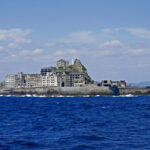Archaeological Sites That Challenge Our Understanding Of History
- Gail Stewart
- May 5, 2025
 Unsplash/Aaron Greenwood
Unsplash/Aaron GreenwoodThroughout human history, archaeological discoveries have continually challenged established historical narratives, offering fresh perspectives that prompt scholars to reconsider traditional beliefs about our past. These discoveries frequently reveal complexities in ancient societies, unexpected technological achievements, and suggest a far richer global history than previously understood. These are some of the most remarkable archaeological sites that have profoundly shaken and reshaped our understanding of history, each detailed with extensive historical context and scholarly insights.
Göbekli Tepe, Turkey
Discovered in 1994 by Klaus Schmidt, Göbekli Tepe is an archaeological marvel dating back approximately 11,600 years, making it significantly older than Stonehenge or the Egyptian pyramids. Comprising massive T-shaped pillars intricately carved with animal reliefs, Göbekli Tepe is widely considered the world’s oldest known temple complex. Its discovery has fundamentally altered the understanding of human societal evolution, indicating that organised religion and monumental construction existed long before agriculture, challenging the previously held belief that agricultural development was the prerequisite for complex societal structures.
Excavations at Göbekli Tepe suggest a sophisticated level of social organisation and religious thought among hunter-gatherer societies. The site was intentionally buried, raising questions about ancient rituals and the purposeful end of its usage. Scholars continue to debate Göbekli Tepe’s exact purpose and the societal dynamics that allowed for its construction, pushing back the timeline for advanced human culture considerably.
Derinkuyu Underground City, Turkey
Derinkuyu is one of several subterranean cities discovered in Cappadocia, Turkey, capable of accommodating around 20,000 residents. Built around the 7th century BCE and expanded in subsequent centuries, this complex underground city includes multiple levels, air shafts, storage rooms, churches, schools, and even wineries. Its elaborate ventilation system and water channels demonstrate sophisticated engineering knowledge that historians previously believed to be beyond the capabilities of its builders.
This massive underground settlement likely served as a refuge during periods of invasion, highlighting the region’s turbulent historical context. The discovery of Derinkuyu has sparked renewed interest in how ancient societies developed architectural innovations in response to environmental and social pressures, forcing historians to reevaluate ancient Near Eastern societies’ technological and organisational capabilities.
Puma Punku, Bolivia
Located near Tiwanaku in Bolivia, Puma Punku features stone blocks intricately carved and fitted with incredible precision, some weighing over 100 tonnes. These structures, dating back around 1,500 years, showcase an unprecedented level of craftsmanship and technical knowledge, raising significant questions about pre-Columbian engineering capabilities. The precisely cut interlocking stones were assembled without mortar, displaying advanced architectural techniques long before European contact.
The enigmatic nature of Puma Punku has generated extensive scholarly debate about the technological tools and methods utilised by the ancient Tiwanaku culture. Archaeologists have explored various theories ranging from advanced metallurgy to innovative stone-working techniques, indicating a highly advanced, culturally sophisticated society that challenges simplistic views of pre-Columbian civilisations.
Nan Madol, Micronesia
Nan Madol, constructed between the 13th and 17th centuries on a coral reef in Micronesia, consists of nearly 100 artificial islands built from massive basalt stones. Often referred to as the ‘Venice of the Pacific,’ Nan Madol’s extensive canals and towering walls reflect advanced construction techniques and maritime capabilities previously underestimated in Pacific Island cultures.
The precise methods of transporting and assembling these enormous basalt blocks, sourced from distant quarries, remain mysterious. Nan Madol’s existence prompts reevaluation of Polynesian navigation and maritime trade networks, providing evidence of extensive societal organisation, skilled labour management, and technological sophistication that continue to intrigue scholars and archaeologists.
Mohenjo-Daro, Pakistan
Mohenjo-Daro, an urban settlement of the ancient Indus Valley Civilisation (circa 2600–1900 BCE), exhibits highly advanced urban planning, drainage systems, and water management unparalleled in other contemporary societies. The city’s carefully laid-out streets, complex sanitation systems, public baths, and sophisticated architecture suggest a highly organised society capable of remarkable civic coordination and resource management.
The site’s discovery has profoundly impacted historical narratives, highlighting a complex, prosperous, and sophisticated civilisation existing concurrently with ancient Egypt and Mesopotamia but uniquely characterised by remarkable social egalitarianism and impressive urban development. Mohenjo-Daro continues to influence our understanding of early urbanisation and social structures in ancient societies.
Yonaguni Monument, Japan
Discovered off the coast of Yonaguni Island in 1987, this submerged rock formation has ignited considerable debate about whether it is natural or man-made. If artificial, Yonaguni potentially dates back as much as 10,000 years, far older than Japan’s earliest known civilisations. The site’s large terraces, right angles, and apparent staircases strongly suggest deliberate construction, implying a lost civilisation with sophisticated architectural knowledge.
This discovery challenges prevailing historical timelines of human civilisation in East Asia, suggesting advanced maritime cultures that possibly existed during the last ice age. Continuous underwater explorations and studies by geologists and archaeologists attempt to unravel the origins of the Yonaguni Monument, significantly impacting our understanding of ancient human migrations and early maritime societies.
Terracotta Army, China
Uncovered in 1974 by local farmers near Xi’an, the Terracotta Army is part of a massive mausoleum constructed for China’s first emperor, Qin Shi Huang, around 210 BCE. The site includes more than 8,000 life-sized clay soldiers, each with unique facial features, as well as chariots and horses. These figures were buried to accompany the emperor into the afterlife, reflecting both the scale of imperial ambition and the depth of artistic and military organisation in early China.
Beyond its sheer size, the Terracotta Army provides invaluable insights into ancient Chinese funerary practices, military structure, and mass production techniques. The craftsmanship and logistical coordination required to build the army challenge assumptions about ancient Chinese technology and labour organisation, reshaping perceptions of early Chinese statecraft and imperial legacy.
Stonehenge, England
Stonehenge, located in Wiltshire, England, and dating back to between 3000 and 2000 BCE, continues to confound historians and archaeologists. The transport of its massive bluestones—some of which originated from over 150 miles away in Wales—poses significant questions about Neolithic engineering and logistical capabilities. Its alignment with solar and lunar cycles suggests that Stonehenge functioned as an astronomical calendar, a ceremonial site, and possibly a burial ground.
Recent discoveries from ground-penetrating radar and nearby excavations indicate that Stonehenge was part of a much larger and more complex ritual landscape. The site’s layered construction, spanning centuries, implies evolving cultural functions and societal priorities. These findings continue to reshape understandings of prehistoric Britain and the sophistication of early European societies.
Tiwanaku, Bolivia
Situated near Lake Titicaca, the ancient city of Tiwanaku flourished between 300 and 1000 CE. Known for its megalithic architecture, sophisticated canal systems, and agricultural innovation, Tiwanaku was a cultural and religious centre in the Andes long before the rise of the Inca. Structures like the Akapana Pyramid and the Gateway of the Sun illustrate astronomical knowledge and ceremonial complexity.
The influence of Tiwanaku extended far beyond its central core, and its collapse remains a subject of scholarly debate. Climate change, political unrest, and economic factors are all considered possible contributors. Regardless, Tiwanaku’s achievements challenge the notion that advanced civilisation in the Andes began with the Inca, showing a rich legacy of indigenous development.
Çatalhöyük, Turkey
Çatalhöyük, located in southern Anatolia and occupied from around 7500 BCE to 5700 BCE, is considered one of the world’s oldest known urban settlements. Its tightly packed houses, entered through roof openings, reflect a unique approach to urban living. The site includes shrines, elaborate wall paintings, and symbolic figurines that suggest complex religious and cultural practices.
Archaeological evidence from Çatalhöyük has transformed views on early human communities. Despite the lack of obvious social hierarchy, residents engaged in agriculture, hunting, and craft production. The site offers clues about the transition from nomadic life to settled farming and community living, providing key insights into the formation of human society.
Saksaywaman, Peru
Built by the Inca near Cusco, Saksaywaman is a fortress complex made from massive stone blocks, some weighing over 100 tonnes, that were cut and fitted together without mortar. The precision with which the stones interlock remains one of the most impressive examples of ancient engineering in the Americas. The site served both military and ceremonial purposes and formed part of the broader sacred landscape of the Inca capital.
The methods used to transport and shape such large stones continue to elude researchers, especially given the absence of wheel-based transportation and iron tools. Saksaywaman’s construction reflects the Inca’s mastery of stonemasonry, seismic-resistant design, and a deep understanding of their environment, challenging assumptions about pre-Columbian technological limitations.
The Antikythera Mechanism, Greece
Recovered from a shipwreck off the Greek island of Antikythera in 1901, the Antikythera Mechanism dates to around 100 BCE and is often referred to as the world’s first analogue computer. This complex device, made of bronze gears, was used to predict astronomical positions and eclipses decades in advance, reflecting an extraordinary understanding of celestial mechanics.
The mechanism’s sophistication has led scholars to reconsider the technological capabilities of Hellenistic Greece. X-ray imaging and 3D modelling have revealed even greater complexity than previously assumed, including differential gears thought to be a much later invention. The Antikythera Mechanism exemplifies a level of scientific and mechanical knowledge thought to be lost until the Renaissance.



